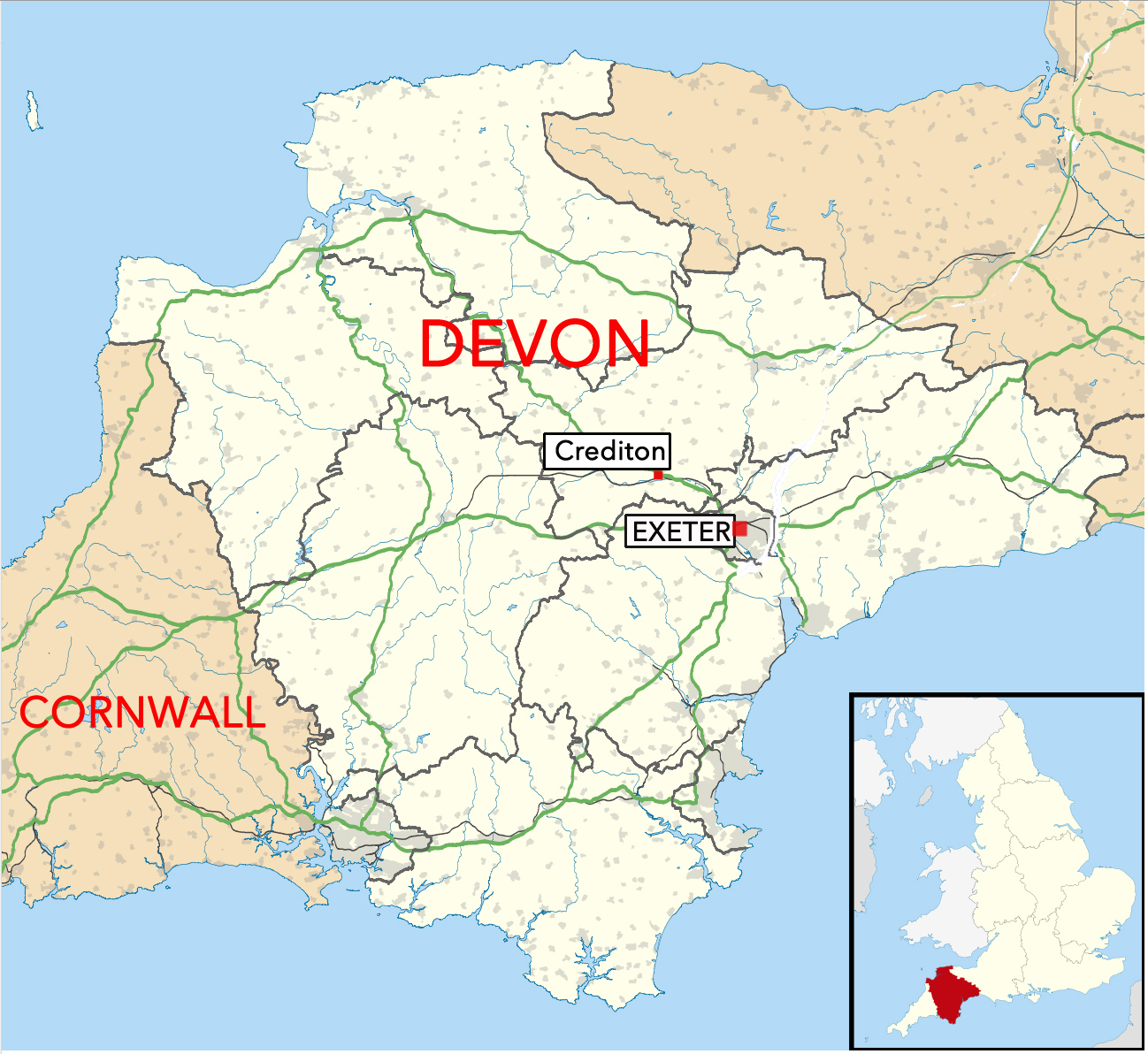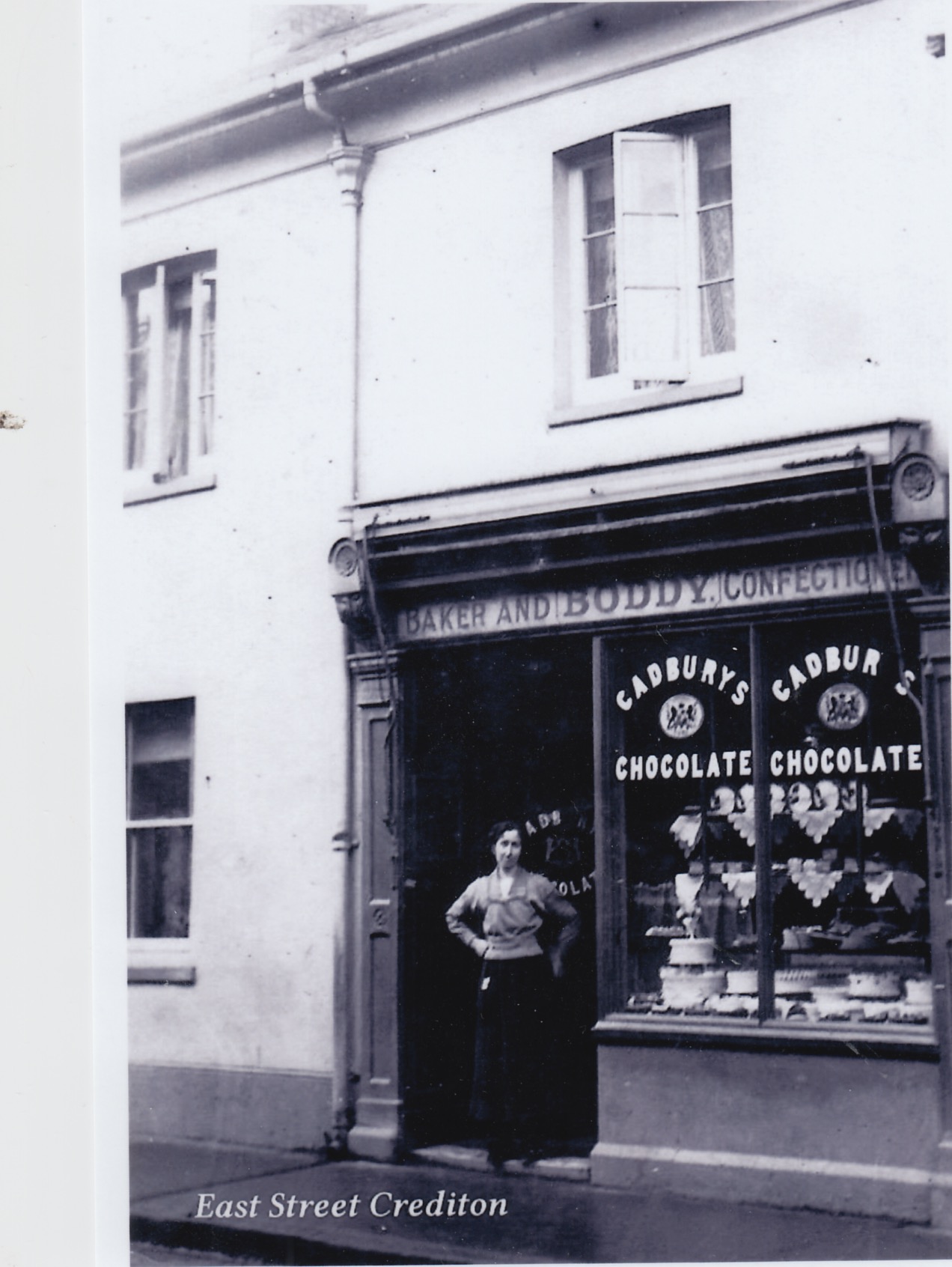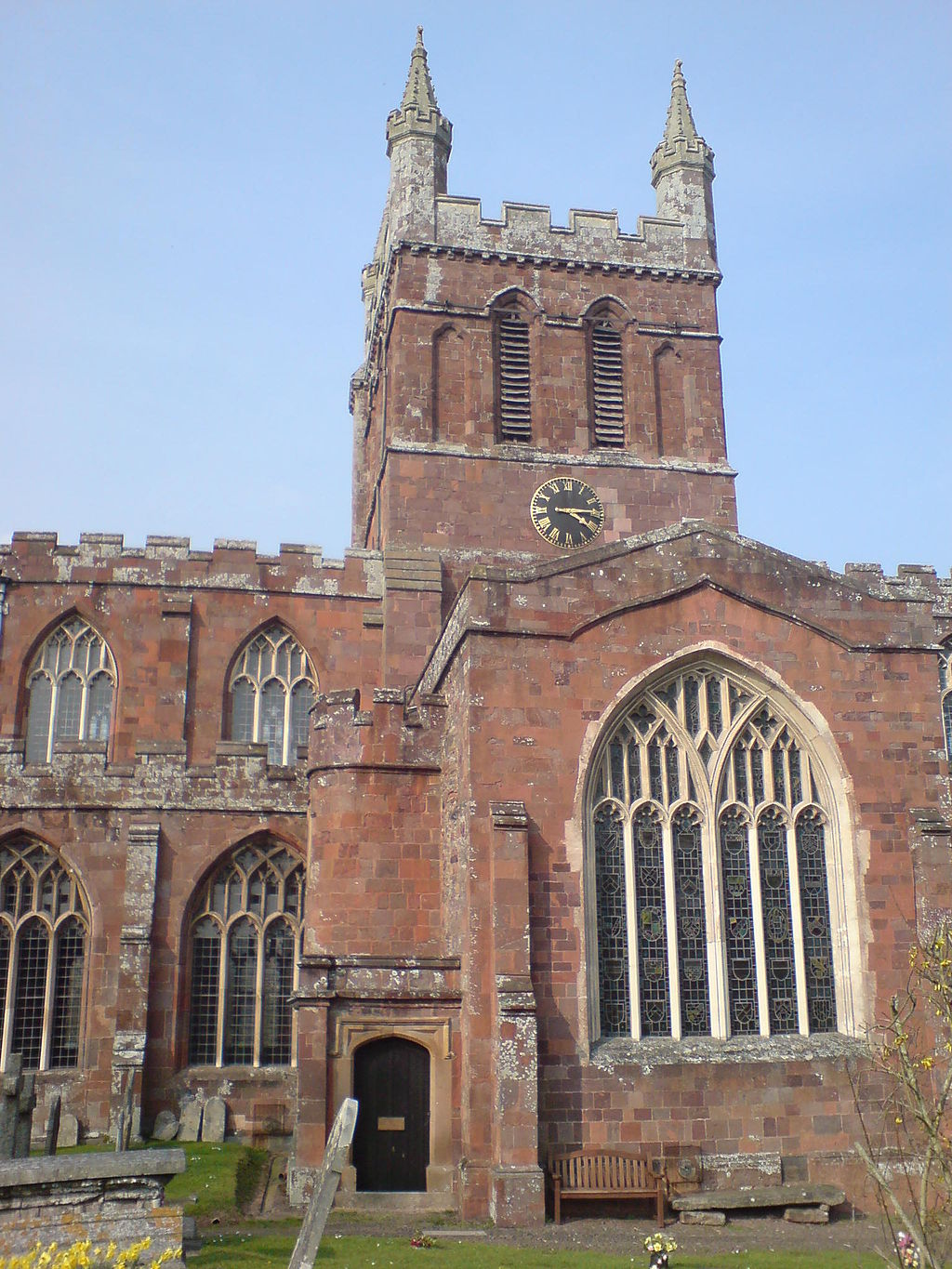John
Body and his wife Mary Badcock were the last of our direct Boddy
ancestors to spend their whole lives in Crediton, in Devon.
The baptisms,
marriages and burials - those flagposts in the lives of
generations - go back hundreds of years for the family in the market
town near Exeter in south western England. Our earliest Boddy/Body
record under that name - that we've so far found - is that of John's
great grandfather William Boddy. William, who died in 1710 is
believed by researchers to have been the William Bodley who was baptised
in Crediton in 1677, one of three children born to George Bodley and his
wife Hannah. The name 'Bodley' appears to have changed around this time
to the 'Boddy' or 'Body' variation - but consistency in spelling for a
mainly illiterate people was not regarded as essential then, or for the
next few hundred years, and often depended on the vagaries of the
various curates who entered the details in the baptism registers.
In 1704,
William married 22 year old R

uth
Burridg (another traditional Crediton family name) in Crediton's Holy
Cross church - but that marriage lasted for only six years, during which
time two sons, William and John, were born. William snr died in
1710 - but burial registers of that time, unlike today's death
certificates, don't record a cause of death.
Three generations later, William's great grandson John Body was born in
1762 in the same little town. In 1786, John married another local,
Mary Badcock, whose family had also lived in Crediton for
generations. John and Mary lived there until the mid 19th century
dying around 1840, although members of the extended Boddy family lived
on in Crediton for decades more - in fact, the Boddy name is still there
into the 2020s. ( Note: At the time of the first full census of England
in 1841, there were 26 people carrying the name of "Boddy" or "Body" in
Crediton.
For centuries, the production of woollen cloth was a thriving home
industry in Crediton and it's probable that the Boddys were involved in
it. In Devon, sheep were bred to meet the needs of the local wool
trade, and so all sides of the rural economy because totally
interdependent. By 1800, there were known to be at least a quarter
of a million hand looms in Britain, and most of these were thought to be
in Devon or Yorkshire
.
For these domestic workers in Crediton, the work didn't end at the
cottage door. The product had to be taken to the market in nearby big
centre of Exeter and there was often no alternative for the women to
walk the 25kilometre return trip and back in a day.
By the end of the 18th century and into the 19th, Crediton was losing
some of its importance as a centre of the woollen industry.
Mechanisation throughout the industrial world meant that by that time,
there were many more competitors - both in England and internationally
- for their product. Until then, much of the work had been done
in the domestic arena by women such as Mary, with spinners and weavers
carrying out their craft on home turf. The production of woollen
cloth was often on a family basis with the carding and spinning
undertaken by the wife and children. In fact, author Daniel Defoe
wrote that even the youngest in the family would be involved, saying
"anyone above four years old works".
As machines took over much of the production, the number of people
working the weaving trade declined, while the interest in other
skills such as boot and shoemaking increased. and they were
equally divided between those working in the fabric trade, and
those involved in shoe and bootmaking. John and Mary's
youngest daughter, another Mary, also became a serge weaver,
according to the 1841 census. There was one exception to the
dominance of the wool and bootmaking trades on that early census -
the couple's eldest son, William (1788-1870) became a store keeper
who appears to be have been a successful businessman in the
town. Later registers show the various Boddy families also
ventured into such enterprises as bakeries - but during John and
Mary's lifetime, the main employment was in wool and associated
areas.

left: A
baker and confectioners' shop operated by a later generation of
the Boddy family in East Street, Crediton.
Our details on John Body are few and far between - we know his
parents and his year of birth (or at least, when he was baptised),
his marriage and his death - but that's as far as our confirmed
knowledge goes. However, by the time Mary his wife died,
death registration had been introduced, and if she is the Mary
Boddy who died in 1839, her occupation was listed on her death
certificate as "weaver" - and it's possible/probable John was also
involved in the trade, either domestically or in one of the local
mills. If, however, Mary was the Mary Boddy who died in 1846, John
was probably a labourer, as that Mary was described as "widow of
John Boddy, a labourer". It's actually a little difficult to work
out who the various Mary Boddys were - John and three of his
brothers had all married women called "Mary", leading to some
confusion when only married surnames were used.

left: Crediton's
cathedral-like Church of the Holy Cross, which dates back to the
12th century. The milestones of Boddy baptisms, marriage and
death were all carried out in the impressive local church, and
the baptisms of all their children, all seven of them, were all
recorded there.
Six
of Mary and John's children stayed in the community of Crediton,
the exception being our ancestor, his father's namesake, John
junior. Young John deserted Crediton for the excitement of
the capital, where he was a messenger in the Treasury Department
of Parliament - so presumably John, unlike his parents, could
read and write, as could probably the rest of his brothers and
sisters. And it was this branch of the family - young
John's descendants, who made the big decision to leave England
and head for Australia in the late 19th century.
Back
to the Boddy Family Tree


 uth
Burridg (another traditional Crediton family name) in Crediton's Holy
Cross church - but that marriage lasted for only six years, during which
time two sons, William and John, were born. William snr died in
1710 - but burial registers of that time, unlike today's death
certificates, don't record a cause of death.
uth
Burridg (another traditional Crediton family name) in Crediton's Holy
Cross church - but that marriage lasted for only six years, during which
time two sons, William and John, were born. William snr died in
1710 - but burial registers of that time, unlike today's death
certificates, don't record a cause of death.
